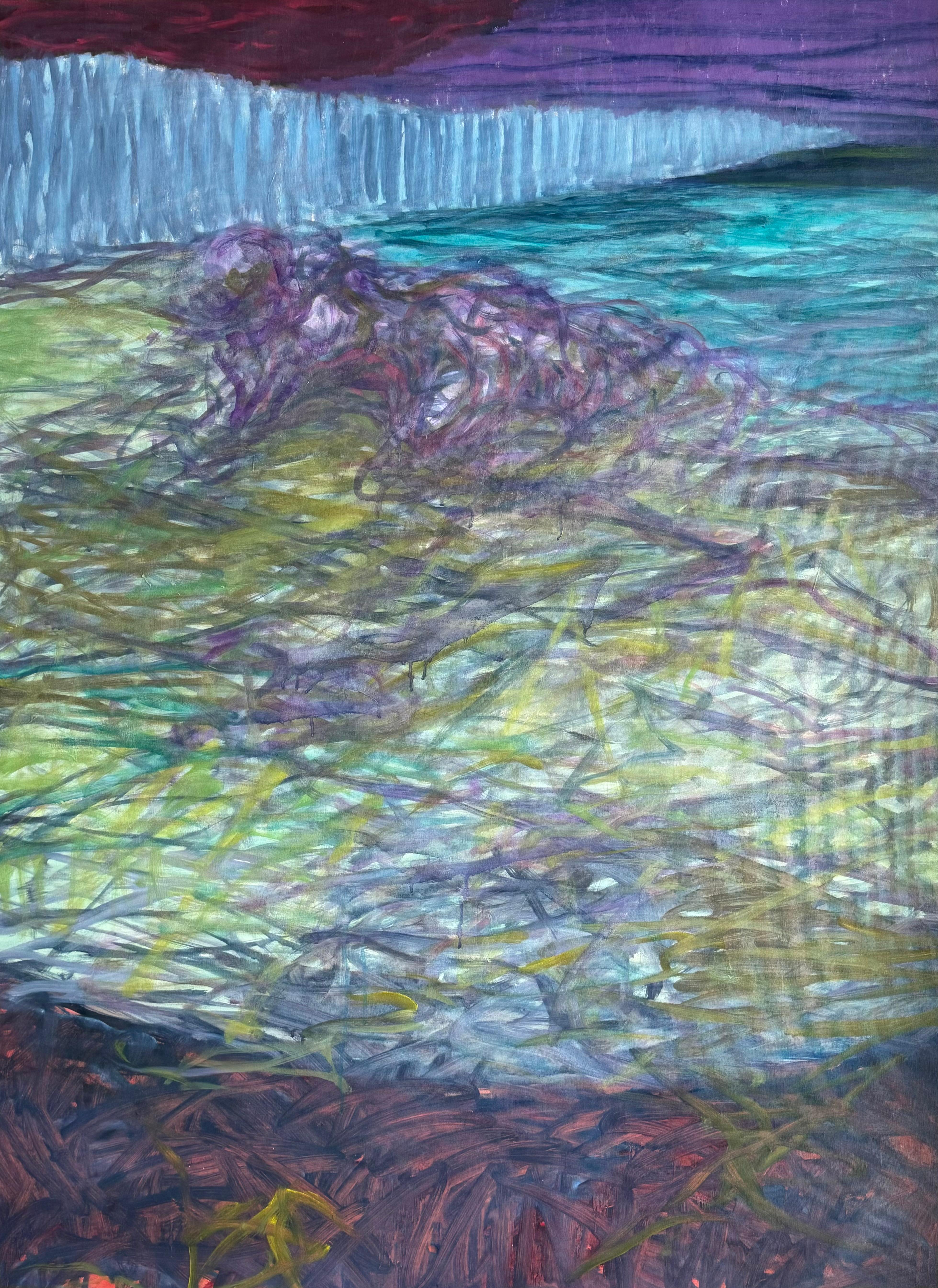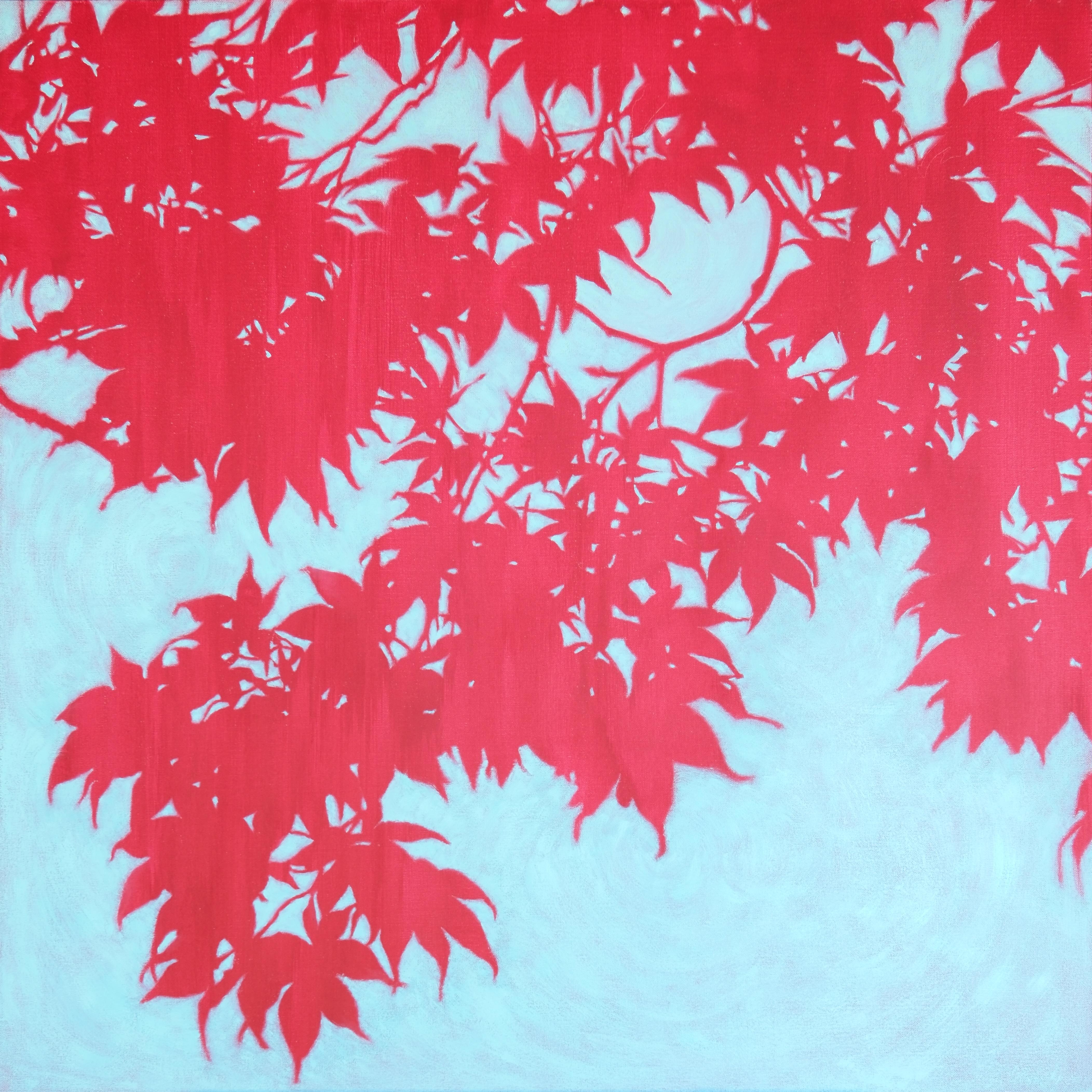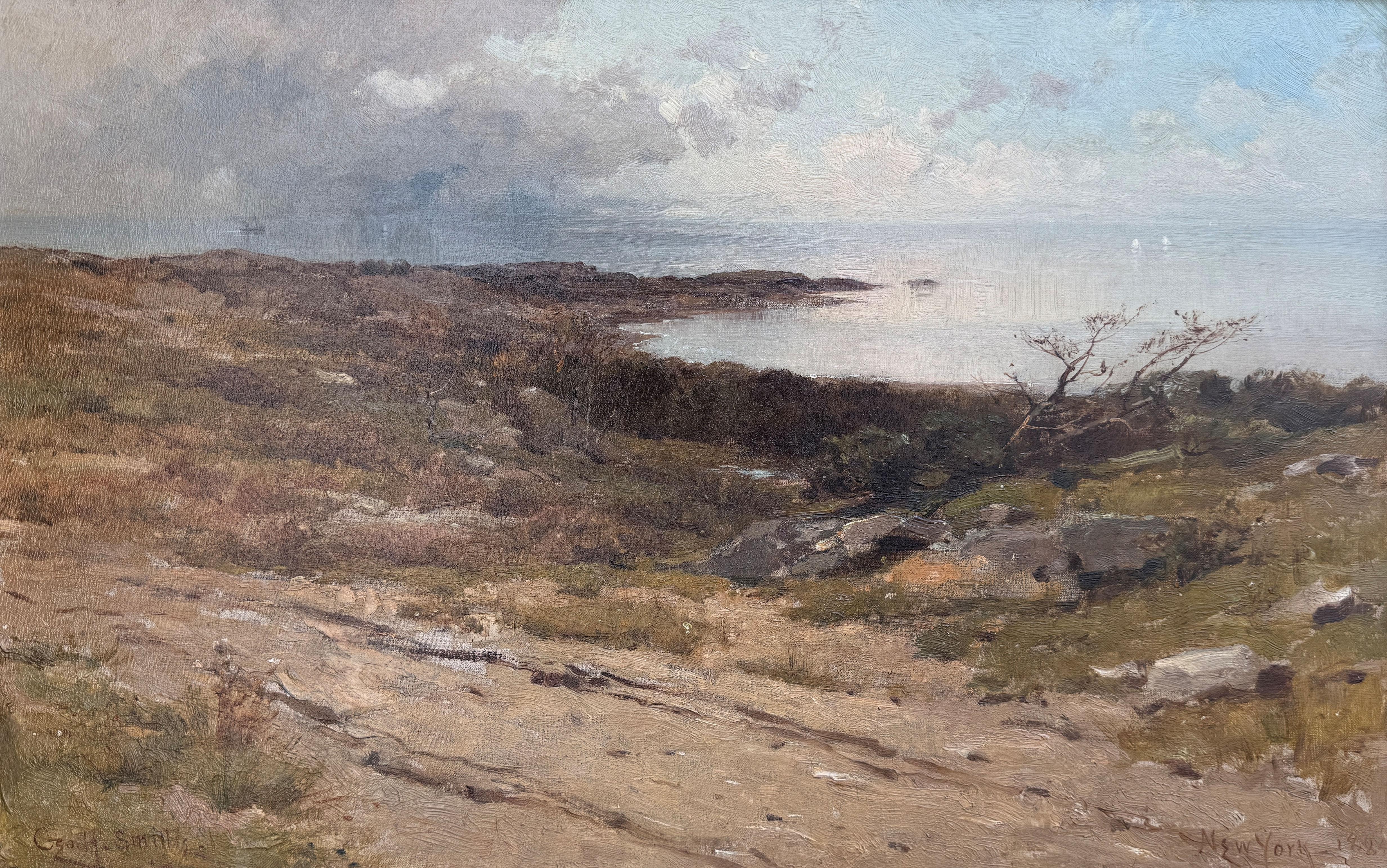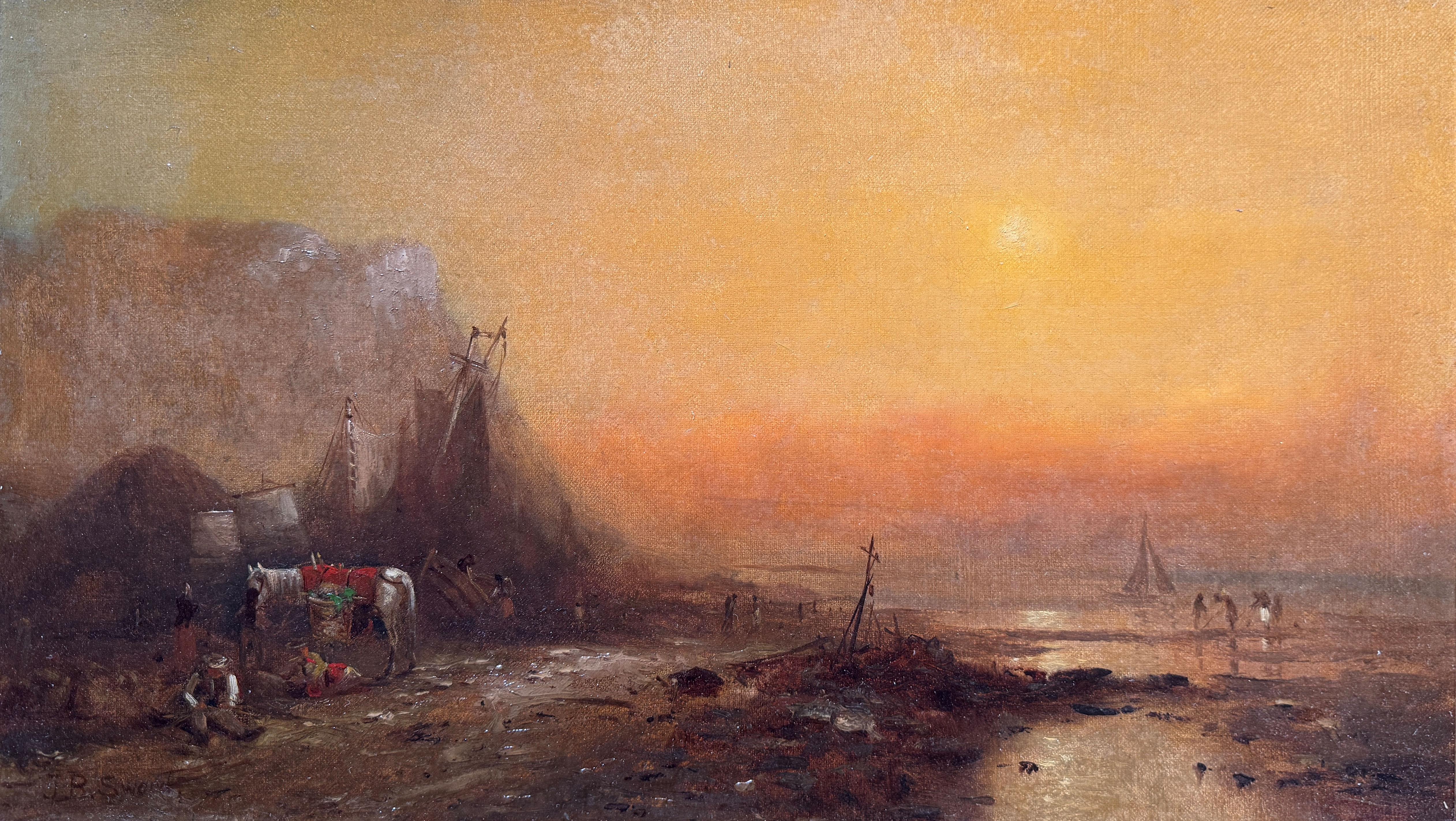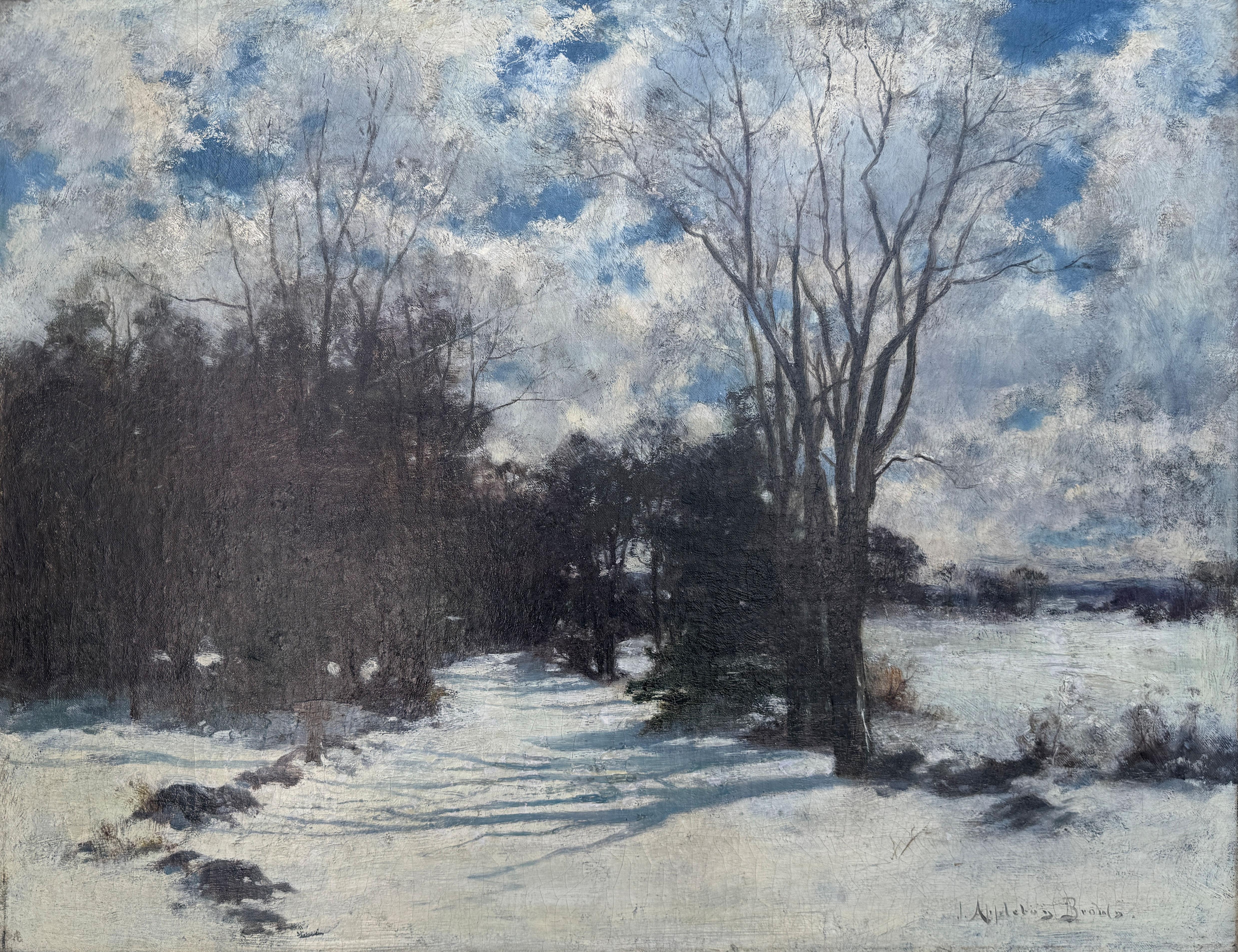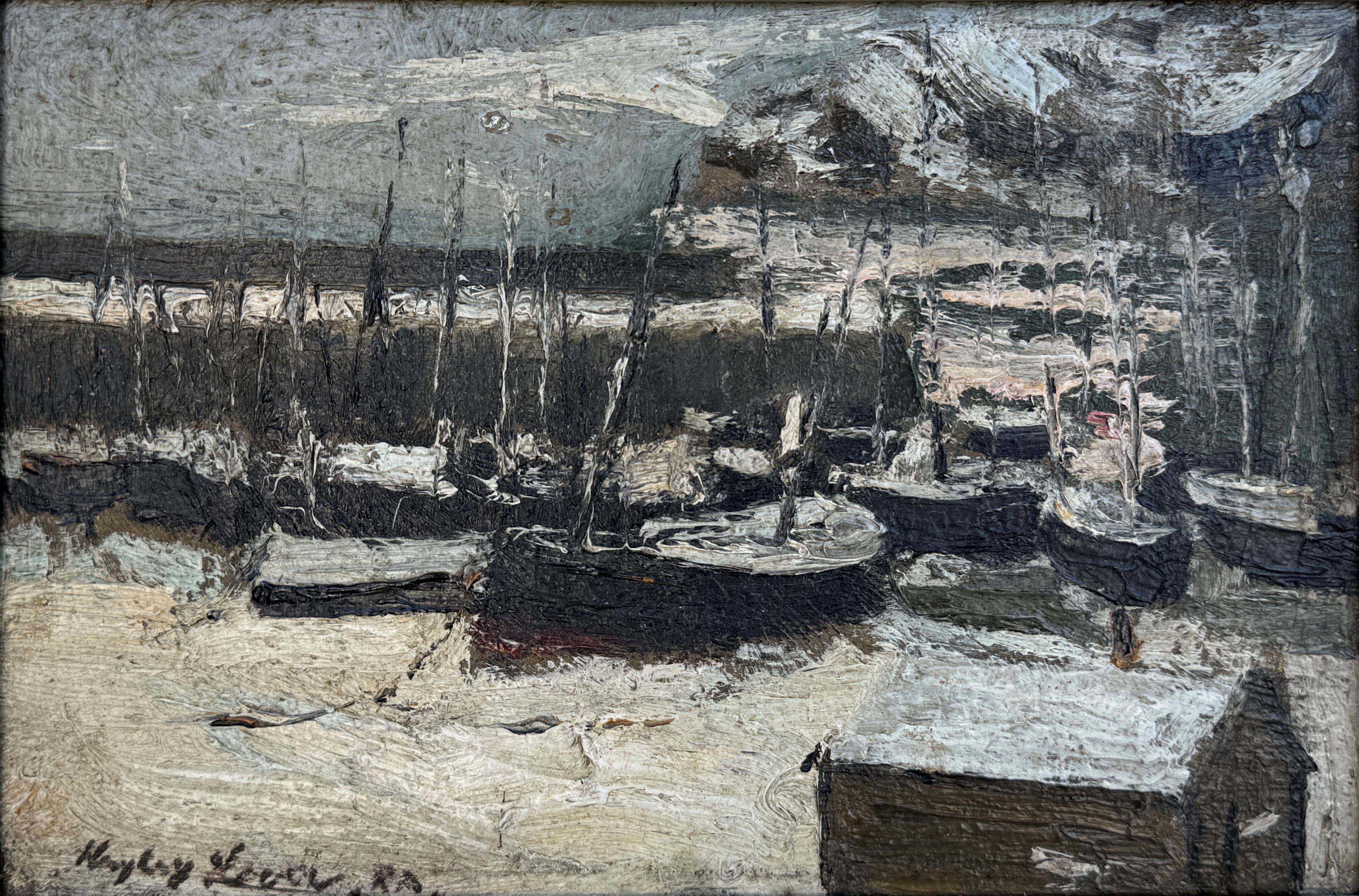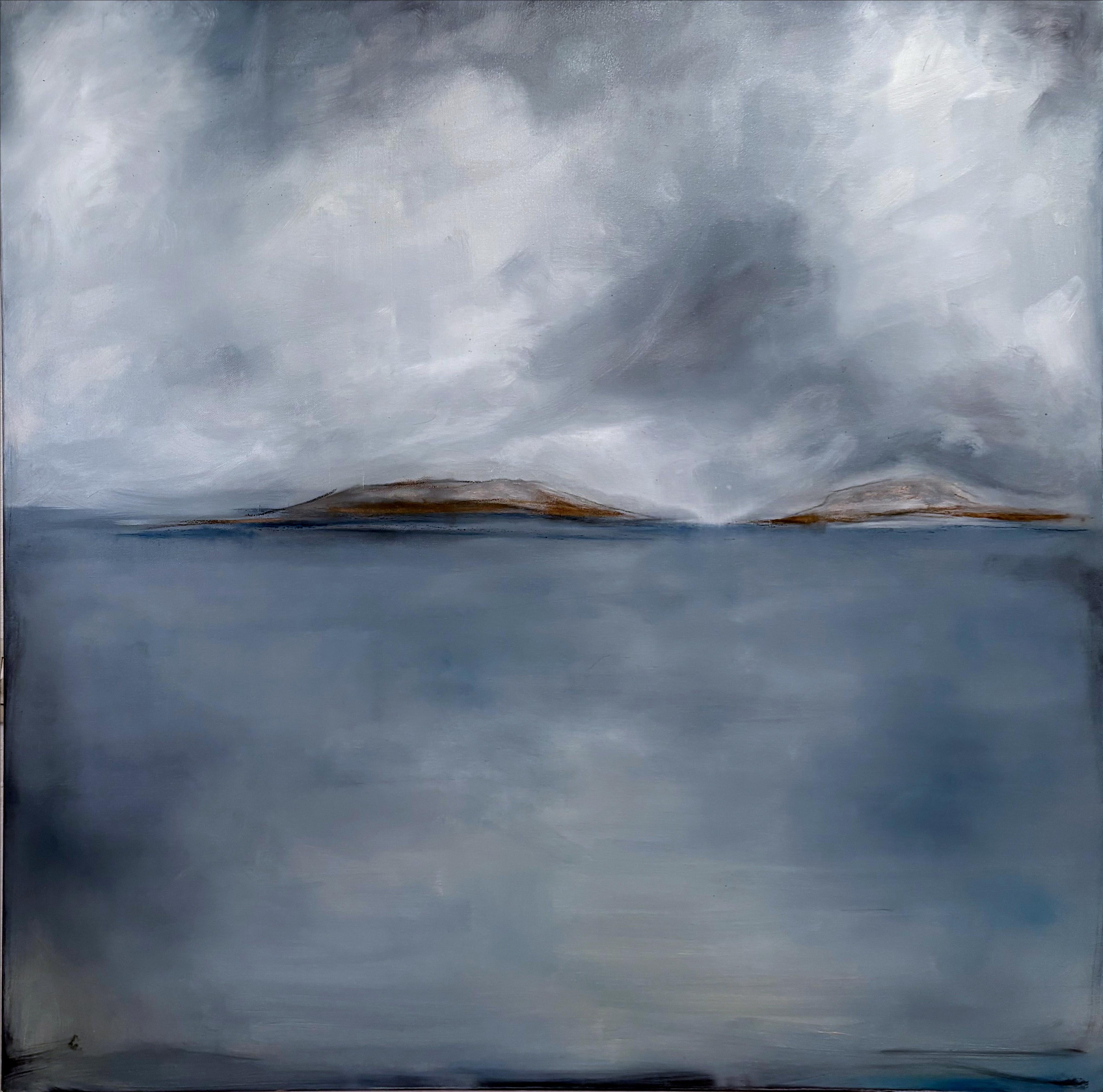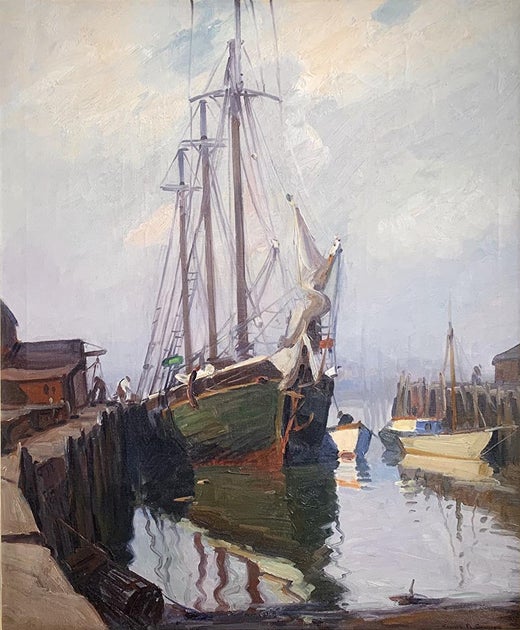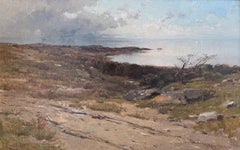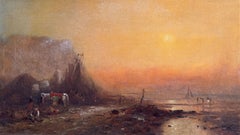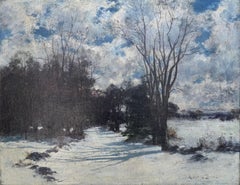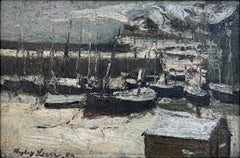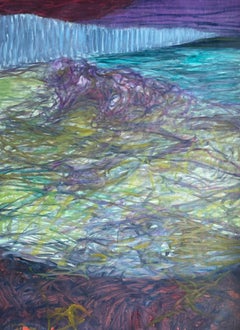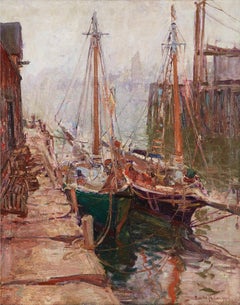
"Waiting for the Tide to Rise, " Emile Gruppe, Boats at Dock, Cape Ann School
Want more images or videos?
Request additional images or videos from the seller
1 of 5
Emile Gruppe"Waiting for the Tide to Rise, " Emile Gruppe, Boats at Dock, Cape Ann Schoolcirca 1930s
circa 1930s
$35,000List Price
About the Item
- Creator:Emile Gruppe (1896 - 1978)
- Creation Year:circa 1930s
- Dimensions:Height: 48.25 in (122.56 cm)Width: 40.38 in (102.57 cm)
- Medium:
- Period:
- Condition:The wax-lined canvas in overall good condition, with slight abrasions along the outer edges of the canvas and inpainting.
- Gallery Location:New York, NY
- Reference Number:1stDibs: LU1841210711882
Emile Gruppe
Emile Gruppe (1896-1978) was an unusually prolific artist. He was at his easel almost every day and created thousands of paintings over a career that lasted 60 years. At his peak, he was completing almost 200 oil paintings a year. Yet he has never failed to find an audience for his depictions of New England in autumn and winter, or his harbor scenes of Rockport and Gloucester in Massachusetts. Gruppe was born in 1896 in Rochester, New York to an artistic family--his father, brother, sister and nephew were all artists. Emile spent his youth in Holland, where his father, Charles Gruppe, worked as an artist. Emile lived in the Netherlands until he was 17, when the family returned permanently to the United States to avoid World War I. In New York City, Gruppe attended classes at the National Academy of Design and at the Art Students League, where he studied under Charles Chapman and George Bridgman. He also studied with John Carlson in Woodstock, New York, where he gained an appreciation for outdoor painting. Carlson “turned me into a painter,” he later said. Gruppe helped found the Rockport Art Association in 1921, but he is most closely linked to Gloucester where he lived from about 1940 until his death. He operated the Gloucester School of Painting from the 1940s into the 1970s and helped turn the Rocky Neck area of East Gloucester into a world-famous art colony. The school boasted an impressive faculty but Gruppe’s own exuberant plein-air demonstrations were often the highlight of the week. Gloucester, with its fleet of whimsically painted fishing vessels, crowded wharf buildings and shacks, and picturesque inhabitants, never ceased to fascinate Gruppe. He also helped popularize Rockport’s famous fishing shack known as Motif #1, sometimes called “the most often-painted building in America.” By the 1940s, Gruppe was one of the most prominent of the Cape Ann artists, a group that included Frederick Mulhaupt, Anthony Thieme, Theresa Bernstein, Marguerite Pierson, William Lester Stevens, and Aldro Thompson Hibbard. The painters of this ‘Cape Ann School’ were some of the first U.S. artists to employ plein air painting techniques. Gruppe’s style, which tended toward Tonalism early in his career, mutated into a bold impressionism in the 1940s and 1950s. Gruppe occasionally traveled to Jeffersonville, VT where he loved to paint the picturesque country roads, farms, and forests, sometimes with distinctive white birch trees. Later in life, he wintered in Florida where he painted some tropical scenes. Though Gruppe suffered a stroke in the early 1970s, he continued to paint until his death in 1978. On the morning he died, the 82-year-old artist had stretched a canvas in preparation for a day of painting. Gruppe’s portrayals of the archetypal the houses, harbors, and rural landscape of New England have never gone out of style. His expressive impressionistic paintings continue to appeal to twenty-first-century sensibilities of a seemingly eternal New England, barely touched by modernity.
About the Seller
5.0
Platinum Seller
Premium sellers with a 4.7+ rating and 24-hour response times
Established in 2022
1stDibs seller since 2022
115 sales on 1stDibs
Authenticity Guarantee
In the unlikely event there’s an issue with an item’s authenticity, contact us within 1 year for a full refund. DetailsMoney-Back Guarantee
If your item is not as described, is damaged in transit, or does not arrive, contact us within 7 days for a full refund. Details24-Hour Cancellation
You have a 24-hour grace period in which to reconsider your purchase, with no questions asked.Vetted Professional Sellers
Our world-class sellers must adhere to strict standards for service and quality, maintaining the integrity of our listings.Price-Match Guarantee
If you find that a seller listed the same item for a lower price elsewhere, we’ll match it.Trusted Global Delivery
Our best-in-class carrier network provides specialized shipping options worldwide, including custom delivery.More From This Seller
View All"East Hampton, New York" George Henry Smillie, Hudson River School, Long Island
By George Henry Smillie
Located in New York, NY
George Henry Smillie
East Hampton, New York, 1884
Signed lower left
Dated lower right
Oil on canvas
15 x 24 inches
Provenance
Cigna Museum and Art Collection
Questroyal Fine Art
T...
Category
1880s Hudson River School Figurative Paintings
Materials
Canvas, Oil
"Mending the Nets at Sunset" James Brade Sword, Atmospheric, Hudson River School
By James Brade Sword
Located in New York, NY
James Brade Sword
Mending the Nets at Sunset
Signed lower left
Oil on canvas
12 x 20 inches
James Brade Sword was born in Philadelphia, but from aro...
Category
1880s Hudson River School Figurative Paintings
Materials
Canvas, Oil
"Snowy Afternoon" John Appleton Brown, American, Snowy Landscape Barbizon School
By John Appleton Brown
Located in New York, NY
John Appleton Brown
Snowy Afternoon
Signed lower right
Oil on canvas
18 x 24 inches
Starting in 1866, John Appleton Brown trained at the Louvre in Paris under the guidance of Jean-...
Category
1880s Barbizon School Abstract Paintings
Materials
Canvas, Oil
"Winter in St. Ives" Hayley Lever, Post-Impressionist, Thick Impasto Snowy Scene
By Hayley Lever
Located in New York, NY
Hayley Lever
Winter in St. Ives
Signed lower left
Oil on canvas
8 1/2 x 11 1/4 inches
Hayley Lever’s versatility has worked against his posthumous reputation. He was never associat...
Category
Early 1900s Post-Impressionist Landscape Paintings
Materials
Canvas, Oil
"Harbour of Rio de Janeiro, Brazil, " Julius Montalant, Maritime Port Trade
Located in New York, NY
Julius Montalant (1823 - 1898)
Harbour of Rio Janeiro, 1843-1850
Oil on canvas
17 x 24 inches
Signed and dated lower right; conservator's inscription on the reverse
Born in Virginia, probably Norfolk, Julius Montalant is known for his drawings and paintings inspired by his travels on board navy ships. Attached to the USS St. Louis around 1844-45, he sketched ports of call he visited, including Brazil, Chile, New Zealand, Australia, and China. Many of his works are held in the Museum of the U.S. Naval Academy. Navy records indicate his rank as 'C. Clerk', which may mean that he held a civilian position.
During the 1850s he lived in Philadelphia, and in 1851-61 he exhibited at the Philadelphia Art Union and the Pennsylvania Academy of the Fine Arts. Included were paintings of North America, Greece...
Category
1850s Hudson River School Landscape Paintings
Materials
Canvas, Oil
"Woodland and Stream" Theresa Bernstein, Red Green Yellow Abstracted Landscape
By Theresa Bernstein
Located in New York, NY
Theresa Bernstein
Woodland and Stream, circa 1980
Signed Lower Right
Oil on canvas
19 x 23 inches
Theresa F. Bernstein was born in Philadelphia in 1895 to cultured, middle-class im...
Category
1980s Expressionist Figurative Paintings
Materials
Oil, Canvas
You May Also Like
Body in the Field #3 - 21st Century, abstract painting, landscape, green, blue
By Zsolt Berszán
Located in Baden-Baden, DE
Body in the Field #3, 2023
oil on canvas
55 1/8 H x 39 3/8 W in.
140 H x 100 W cm
Zsolt Berszán embodies in his works the dissolution of the human body through the prism of the frag...
Category
2010s Abstract Expressionist Abstract Paintings
Materials
Canvas, Oil
Spanish landscape oil on canvas painting
Located in Barcelona, Barcelona
Frameless.
Category
1980s Impressionist Landscape Paintings
Materials
Canvas, Oil
$591 Sale Price
50% Off
Spanish school fishermen's beach seascape Spain
Located in Barcelona, Barcelona
Signed Oliveras - Fisherman's Beach - Oil on canvas.
Slight paint chips on the sides that covered the frame.
Oil measurements 61x122 cm.
Frameless.
Category
1980s Post-Impressionist Landscape Paintings
Materials
Canvas, Oil
$614 Sale Price
35% Off
Barreiro Portugal oil on canvas painting seascape beach boats
Located in Barcelona, Barcelona
Signed Adolfo Perez
Frameless
Category
Early 2000s Photorealist Landscape Paintings
Materials
Oil, Canvas
$307 Sale Price
48% Off
Blooming pond 50X50 oil on canvas
Located in Zofingen, AG
In this vibrant oil painting, I've poured my zest for nature and renewal. Brushstrokes blossom across the canvas, capturing the essence of a serene pond, where time seems suspended. ...
Category
2010s Expressionist Landscape Paintings
Materials
Canvas, Oil
Dawn in Paris 50X50 oil on canvas
Located in Zofingen, AG
In this vibrant oil painting, I've captured the romance of twilight caressing Paris. My brushstrokes convey the dynamic energy of day giving way to night, as the sky blushes with war...
Category
2010s Expressionist Landscape Paintings
Materials
Canvas, Oil
Recently Viewed
View AllMore Ways To Browse
Irish Oil Painting
Unstretched Canvas Art Signed
Antique View Master
Art By Lucien
Canal Paintings
New England Impressionist
Painting Boat House
Paul Woods Paintings
April Street
Northern California Painting
Young Couple Painting
Life Size Horse
Wales Landscapes
Vineyard Art
Modern Cityscape Paintings
Watercolor Seascape
St John Oil Paintings
Vintage Fall Paintings
